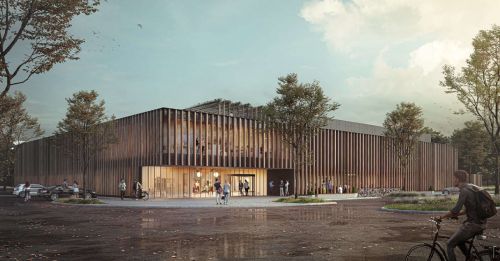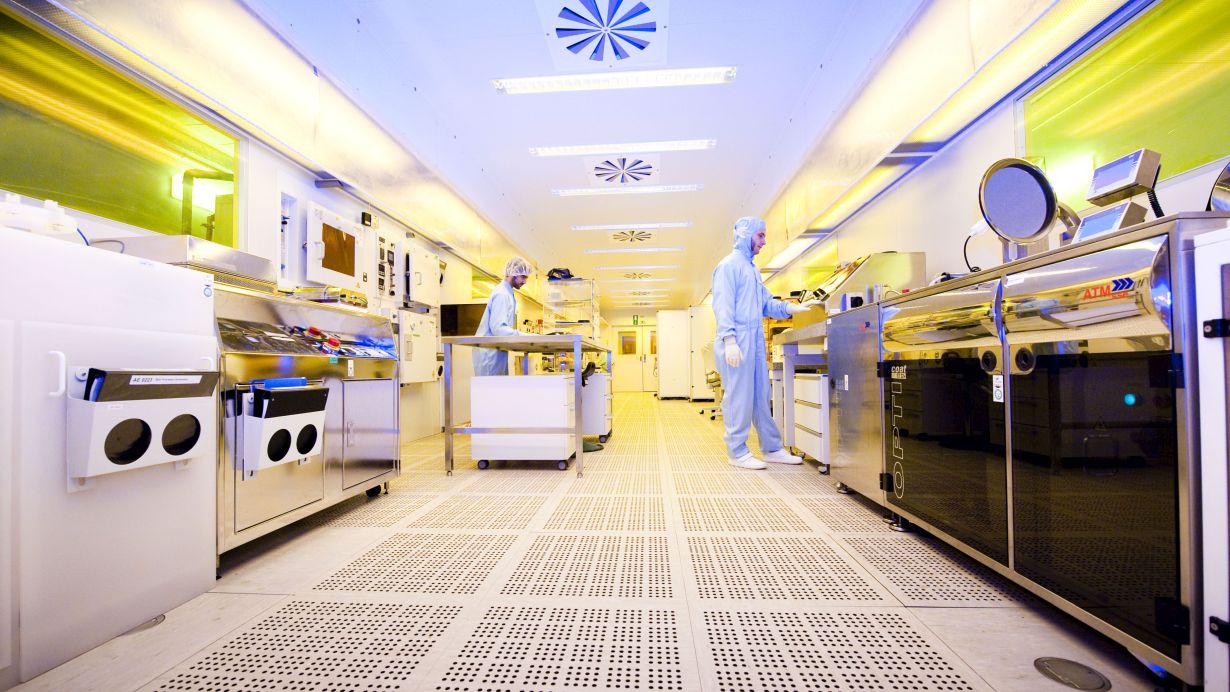The Karlsruhe Center for Optics and Photonics (KCOP) is taking shape. At the new, highly modern technology center of Karlsruhe Institute of Technology (KIT), research teams will work on applications of light or photons. These include highly efficient photovoltaics, 6G communication and glass fiber networks, novel quantum sensors, superconducting detectors, extremely fast 3D image acquisition, and high-resolution microscopy for life sciences. The 56 million Euro building is planned to be inaugurated in early 2026.
“Science needs inspiring places like KCOP, where expertise, excellence, and top-level laboratory equipment meet with interdisciplinary collaboration,” said Professor Oliver Kraft, KIT Vice President Research, at the roofing ceremony for the new building last week (December 1, 2023). “This will leverage synergies, ideas, and innovations and eventually contribute to the technological and digital sovereignty of Germany.”
Optics and photonics are among the key technologies of our modern society. Glass fibers, photovoltaics, sensors, microscopes, microchips, and nanomaterials – they all are based on the use of light. “Our technologies are essential ingredients of the energy transition, digitalization, and networking and they are indispensable for recording data in industry and science,” Christian Koos summarizes. He is Professor of the Institute of Photonics and Quantum Electronics and of the Institute of Microstructure Technology of KIT as well as Scientific Director of KCOP.
2 000 Square Meters of Clean Room and Laboratory Areas
Koos points out that excellent laboratories and laboratory equipment are prerequisites of cutting-edge research in these areas. Dr. Lothar Hahn, KCOP project manager, adds that the instruments are highly specialized and rooms have to meet very high requirements: “For our work, we need clean rooms. These are rooms with very few particles. Let me give an example why this is so important: A human hair is about 20 times thicker than one of our components. Any particle present would destroy our components.” Creating such experimental conditions, however, represents a considerable effort. So far, small and partly outdated clean rooms have been available at various institutes of KIT. KCOP will now set new standards and use synergies. “As of 2026, research teams use an internationally outstanding technology platform with about 2,000 square meters of clean rooms and laboratory areas and a pool of instruments. Thanks to their joint use, more efficient operation will be possible,” Koos emphasizes. Apart from Karlsruhe, there are only few places in Europe where degree programs are offered in optics and photonics. With KCOP, KIT will become even more attractive for researchers, students, and industry partners.

laboratory areas will be available to researchers as of 2026. (Image: Nickl & Partner)
Interdisciplinary Dynamics, Sustainable Building
At KCOP, researchers of various disciplines will meet and discuss under one roof: “KCOP will give rise to an entirely new level of interdisciplinary dynamics,” Koos says. The technology center will mainly be available to the institutes of KIT, but also external research teams will be given the opportunity to work there. The planned fields of work will include renewable energies, novel communication technologies, quantum components, life sciences, digital fabrication on the nanoscale, and customized materials.
The Helmholtz Association funds the new building with about EUR 50 million, another 6 million come from KIT. Ongoing construction work is on schedule and budget. According to Lothar Hahn, the building was planned such that the silver standard can be reached. The latter is defined in the “Assessment system for sustainable building” of the Federal Ministry for Housing, Urban Development, and Building. For this, good insulation of the building, highly efficient heat recovery, and use of recycled and environmentally compatible construction materials must be ensured. The waste heat of another large experimental facility in the vicinity is used for heating the new building.
Being “The Research University in the Helmholtz Association”, KIT creates and imparts knowledge for the society and the environment. It is the objective to make significant contributions to the global challenges in the fields of energy, mobility, and information. For this, about 10,000 employees cooperate in a broad range of disciplines in natural sciences, engineering sciences, economics, and the humanities and social sciences. KIT prepares its 22,800 students for responsible tasks in society, industry, and science by offering research-based study programs. Innovation efforts at KIT build a bridge between important scientific findings and their application for the benefit of society, economic prosperity, and the preservation of our natural basis of life. KIT is one of the German universities of excellence.

